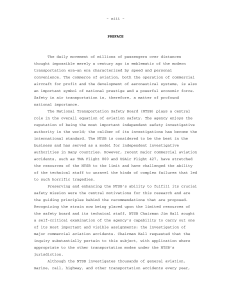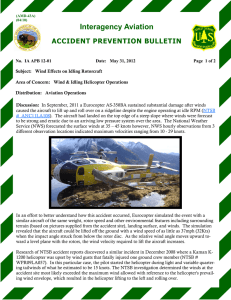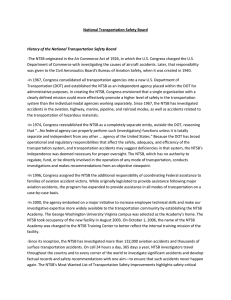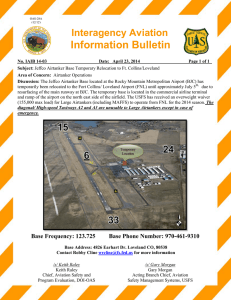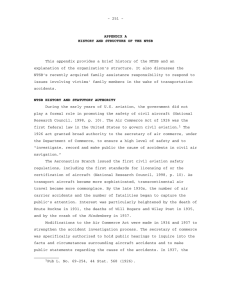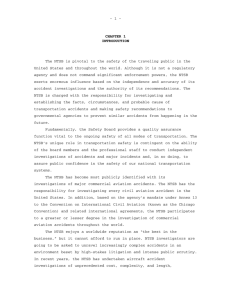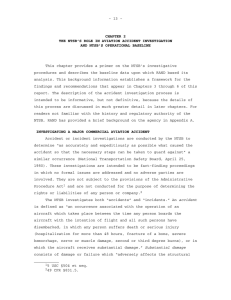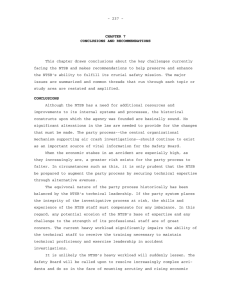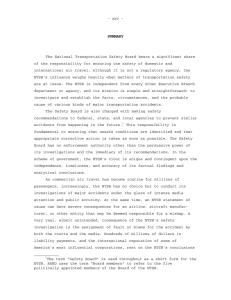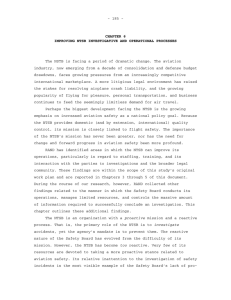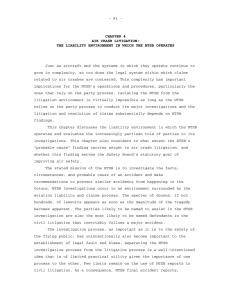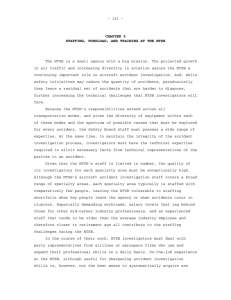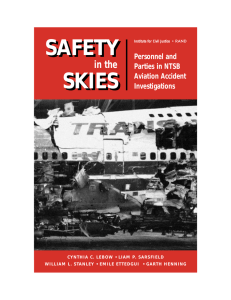Lessons Learned Interagency Aviation
advertisement
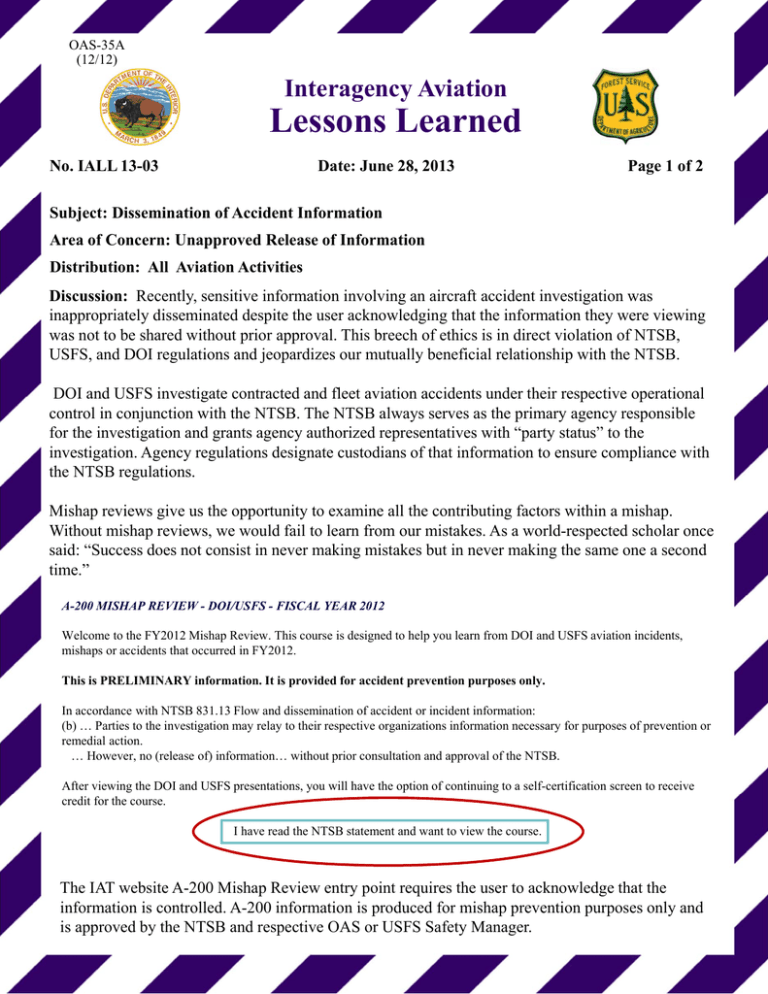
OAS-35A (12/12) Interagency Aviation Lessons Learned No. IALL 13-03 Date: June 28, 2013 Page 1 of 2 Subject: Dissemination of Accident Information Area of Concern: Unapproved Release of Information Distribution: All Aviation Activities Discussion: Recently, sensitive information involving an aircraft accident investigation was inappropriately disseminated despite the user acknowledging that the information they were viewing was not to be shared without prior approval. This breech of ethics is in direct violation of NTSB, USFS, and DOI regulations and jeopardizes our mutually beneficial relationship with the NTSB. DOI and USFS investigate contracted and fleet aviation accidents under their respective operational control in conjunction with the NTSB. The NTSB always serves as the primary agency responsible for the investigation and grants agency authorized representatives with “party status” to the investigation. Agency regulations designate custodians of that information to ensure compliance with the NTSB regulations. Mishap reviews give us the opportunity to examine all the contributing factors within a mishap. Without mishap reviews, we would fail to learn from our mistakes. As a world-respected scholar once said: “Success does not consist in never making mistakes but in never making the same one a second time.” A-200 MISHAP REVIEW - DOI/USFS - FISCAL YEAR 2012 Welcome to the FY2012 Mishap Review. This course is designed to help you learn from DOI and USFS aviation incidents, mishaps or accidents that occurred in FY2012. This is PRELIMINARY information. It is provided for accident prevention purposes only. In accordance with NTSB 831.13 Flow and dissemination of accident or incident information: (b) … Parties to the investigation may relay to their respective organizations information necessary for purposes of prevention or remedial action. … However, no (release of) information… without prior consultation and approval of the NTSB. After viewing the DOI and USFS presentations, you will have the option of continuing to a self-certification screen to receive credit for the course. I have read the NTSB statement and want to view the course. The IAT website A-200 Mishap Review entry point requires the user to acknowledge that the information is controlled. A-200 information is produced for mishap prevention purposes only and is approved by the NTSB and respective OAS or USFS Safety Manager. IALL 13-03 June 28, 2013 Page 2 of 2 Agency regulations require that information received as a result of participating in an NTSB investigation be handled in accordance with 49 CFR 831.13 and is subject to the provisions of the Freedom of Information Act (FOIA) as amended, and the Privacy Act of 1974. Prior to every A-200 mishap review, the “Ground Rules” slide is shown to reiterate the purpose of the mishap review and that the information is controlled. Parties to an investigation must verify that they are familiar with the NTSB Accident/Incident Investigation Procedures which specifically states: “… Parties to the (NTSB) investigation may relay to their respective organizations information necessary for purposes of prevention or remedial action. However, no information concerning the accident or incident may be released to any person not a party representative to the investigation (including non-party representative employees of the party organization) before initial release by the (NTSB) Safety Board without prior consultation and approval of the (NTSB) IIC.” DOI designates OAS with managing that relationship. USFS designates the Branch Chief, Aviation Safety Management Systems with managing that relationship. All aviation supervisors and managers should discuss this Lessons Learned with their personnel to ensure that the information is used in an appropriate and approved manner. If anyone has any questions, please contact the OAS Aviation Safety and Program Evaluations Division or USFS Aviation Safety Management Systems office. /s/ Keith C. Raley /s/ James Truitt Keith C. Raley Chief, Aviation Safety and Program Evaluation James Truitt Acting Branch Chief, Aviation Safety Management Systems
